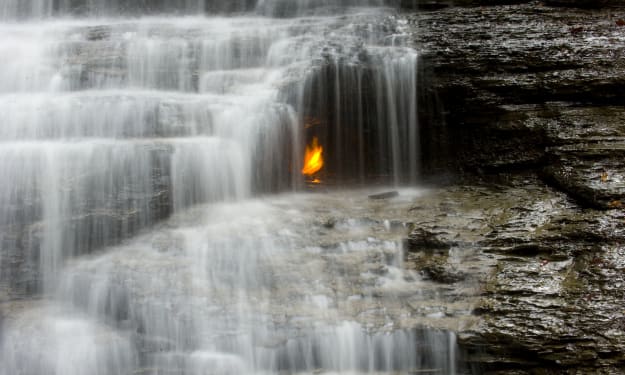A failed lunar exploration
Focused exploration targets

As the closest planet to Earth, the Moon has rightly become a key exploration target for humans, and in the past, humans have launched a large number of probes to the Moon, although humans do not always succeed in launching probes to the Moon, for example, in 2019, there was a mission to the Moon that failed.
A failed lunar exploration that left a very life-like creature on the moon
The mission came from an organization called the Arch Mission Foundation, which was scheduled to send a probe called "Genesis" (Beresheet) to the moon, with a specific landing site on the lunar surface. The specific landing site is the northern part of the "Sea of Tranquility" on the lunar surface.
On February 21, 2019, Genesis was successfully launched and entered orbit around the Moon on April 4, but on April 12, while preparing to land on the lunar surface, Genesis' main engine unexpectedly failed, causing the probe to fall into uncontrolled orbit. The probe crashed uncontrollably on the lunar surface.
(This is a before and after view of the Genesis crash area)
Among the Genesis payload, in addition to the usual science equipment (such as magnetometers, laser reflector arrays, etc.), there was a special device known as the "lunar library.
The device is similar in appearance to a CD-ROM, which stores about 30 million pages of data and information related to human civilization. Some of them are sealed in special epoxy resin, while others are distributed on the surface of the "Moon Library".
Water bears are the common name for retarded creatures, which are so small that their body length is usually no more than 1 mm, so we usually do not notice their presence.
It is such a tiny creature, but has a strong vitality, in short, they can survive in a variety of extreme environments, such as high temperature, high pressure, high salinity, high radiation, low temperature, low pressure, lack of oxygen, lack of water, etc.
To study the vitality of water bears, people even took some water bears into space and exposed them to the vacuum of outer space for up to 10 days, and the results of the experiment showed that about 68% of these water bears survived. Because of this, water bears are often referred to as the most resilient creatures on Earth.
What is clear is that despite this being a failed lunar expedition, these water bears were sent to the moon by humans and have remained on the moon ever since.
Are the water bear worms that were sent to the moon in 2019, are they okay now?
Before the crash, the last telemetry data from Genesis showed that it hit the moon at a speed of about 139 m/s (about 500 km/h), and the water bears were able to withstand a relative impact of about 900 meters per second, based on this, plus the cushioning effect of epoxy resin, so "The initial speculation by the Genesis researchers is that at least some of these water bears would have survived the impact.
This speculation has undoubtedly generated a lot of debate, with some describing the failed mission as "a small step for this group, but a big step for the entire water bear population", and the imaginative even depicted that "the water bears will grow and develop on the moon from now on, and in a few years, they will evolve into intelligent creatures and become the most intelligent. They will evolve into intelligent creatures and return to Earth".
From a biological point of view, however, even if some of the water bears survive the impact, their future is not promising. Although water bears are very strong, they are not as strong as many people think, in extreme environments, they can not survive and reproduce normally, but only through a state known as "cryptobiotic" to maintain their own minimum life.
In simple terms, "cryptobiotic" can be understood as a state of pseudo-death, in this state, the water content of the body and metabolic level will be reduced to a very low level, so that they can greatly enhance their ability to adapt to the environment, thus helping them to survive the harsh environment, until the surrounding environment When the surrounding environment becomes suitable for survival, they may return to a normal state.
The water bears on board Genesis entered the "cryptic" state beforehand, but even so, it is difficult for them to survive for a long time in the lunar surface environment, and the biggest threat to the water bears is the temperature of the lunar surface. The biggest threat to water bears is the temperature of the lunar surface.
From the data alone, water bears in the "cryptobiotic" state can tolerate temperatures up to 151 degrees Celsius and down to -272 degrees Celsius, which seems to be a wide range, but the reality is that if the temperature is too extreme, the water bears will not last long.
Studies have shown that at 151 degrees Celsius and minus 272 degrees Celsius, the water bears in the "cryptic" state can only hold on for a few minutes, and minus 200 degrees Celsius, only a few days, when the ambient temperature is heated to 63.1 degrees Celsius, the water bears in the "cryptic" state can only hold on for a few days. When the ambient temperature is heated to 63.1 degrees Celsius, the water bears in the "cryptogenic" state will die at a rate of 50% less per day, and when the temperature is raised to 82.7 degrees Celsius, it becomes a rate of 50% less per hour.
Without the protection of the atmosphere, the surface temperature of the moon can be as high as 127 degrees Celsius in direct sunlight during the day, while at night, the surface temperature of the moon can be as low as -183 degrees Celsius, and the temperature difference between day and night is as high as 310 degrees Celsius. In this harsh environment, even the "cryptic" water bears can not survive for a long time.
In addition to the temperature, the lack of oxygen, water, and high radiation on the surface of the moon will also form a severe test for water bears, so reasonable speculation is that for those sent to the moon by humans, water bears are now likely to have all died.
However, some researchers pointed out that, in a lucky enough case, there may be some water bears will be in the process of impacting the moon deep below the surface of the moon, where you can avoid the harsh environment of the moon's surface, in addition, these water bears may also get some water molecules, to maintain their own "hidden" state.
In other words, the best case is that those water bears sent to the moon by humans, there are now a few "lucky" still maintain their own minimum life, as to whether they will develop and grow in the future on the moon, is simply an impossible thing.
About the Creator
Robert Jack
One of the secrets of emotional stability for adults is to keep the expectations of others to a minimum.






Comments
There are no comments for this story
Be the first to respond and start the conversation.